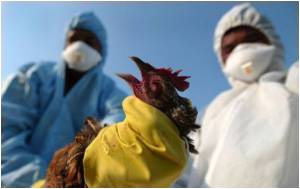
These viruses do not normally infect humans. However, sporadic human infections with avian flu viruses have occurred.
Since 2003, for example, more than 600 cases, including more than 300 human deaths owing to infection with highly pathogenic avian influenza A H5N1, have been reported worldwide, according to the World Health Organisation, the journal Biology Letters reports.
Population ecologists Pejman Rohani and Victoria Brown from the University of Michigan used a math model to explore the consequences of altered interactions between an important species of migratory shorebird and horseshoe crabs at Delaware Bay as a result of climate change.
They found that climate change could upset the carefully choreographed interactions between ruddy turnstone shorebirds and the horseshoe crabs that provide the bulk of their food during the birds' annual stopover at Delaware Bay, a major estuary of the Delaware River bordered by New Jersey to the north and Delaware to the south.
Climate change-caused disruptions to the well-timed interplay between the birds and crabs could lead to an increase in the avian flu infection rate among ruddy turnstones and resident ducks of Delaware Bay, the researchers found, according to a Michigan statement.
Advertisement
"We're not suggesting that our findings necessarily indicate an increased risk to human health," said Rohani, a professor of ecology and evolutionary biology, a professor of complex systems and a professor of epidemiology at the School of Public Health.
Advertisement
Source-IANS










